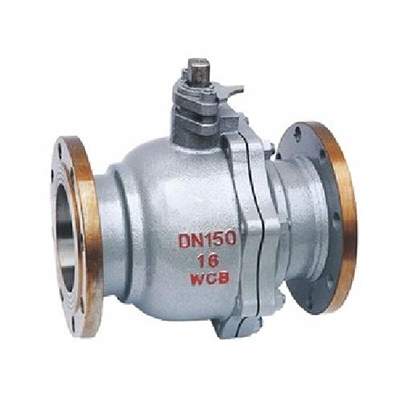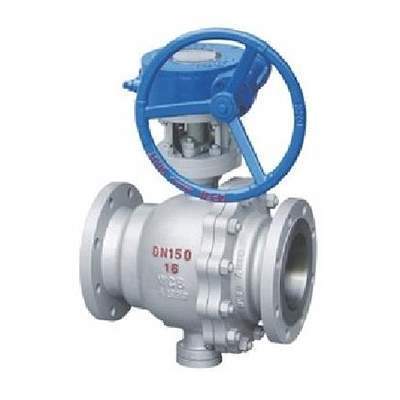Welcome to My Blog!
Before we dive into the content, if you’re interested in our products or have any questions, please feel free to visit our Contact Us page on the website. Our team is ready to assist you with inquiries, orders, or any support you may need.
Now, let’s get started on our journey together. I hope you find the content here insightful, engaging, and valuable.
What is a Valve of the Ball?

A valve of the ball, commonly known as a ball valve, is a type of quarter-turn valve that uses a spherical ball to control the flow of liquids or gases. The ball has a hole through its center, which allows fluid to pass through when aligned with the pipeline and blocks flow when rotated 90 degrees. This simple yet effective design makes it one of the most reliable valves used in industrial, commercial, and residential applications.
Compared to other valves such as gate valves or butterfly valves, the valve of the ball offers quicker operation, tighter sealing, and minimal pressure drop. While gate valves rely on a sliding gate and butterfly valves use a rotating disc, the ball valve’s spherical mechanism ensures less leakage and easier maintenance, making it a preferred choice for pipelines that require precise control.
How Does a Valve of the Ball Work?
The working principle of a valve of the ball is straightforward. The valve consists of a hollow ball, a stem, and a handle or actuator. When the handle is turned 90 degrees, the ball rotates inside the valve body, either allowing flow through the hole in the ball or stopping it entirely. This on/off control mechanism makes ball valves ideal for applications that require quick and reliable shutoff.
Valve of the ball systems are commonly used in water supply pipelines, gas distribution, oil transportation, and chemical processing plants. In industrial settings, they are preferred for high-pressure and high-temperature applications because of their durability and robust sealing capabilities. Diagrams of the internal structure often help users understand the flow path and operational efficiency of these valves.
Types of Valve of the Ball
There are several types of valve of the ball, each designed to meet different operational requirements.
- Full Port vs Standard Port: Full port valves allow unrestricted flow, reducing pressure drop, while standard port valves have a slightly smaller opening, making them more economical for general use.
- Floating Ball Valve vs Trunnion Ball Valve: Floating ball valves have the ball held in place by two seats and rely on fluid pressure to seal, whereas trunnion ball valves have the ball anchored on top and bottom, ideal for high-pressure systems.
- Material Variants: Valves of the ball are commonly made from stainless steel, brass, PVC, or carbon steel. Stainless steel is preferred for chemical resistance, brass for moderate water systems, and PVC for lightweight, non-corrosive applications.
Choosing the correct type depends on the application, pressure, temperature, and fluid type in your system.
Advantages and Disadvantages of Valve of the Ball
Valves of the ball are highly valued for their advantages:
- Quick Operation: They can be opened or closed with a simple 90-degree turn.
- Tight Sealing: Minimal leakage even under high pressure.
- Durability: Resistant to wear and corrosion, especially stainless steel variants.
- Low Maintenance: Simple design reduces the need for frequent repairs.
However, ball valves also have some limitations. They are not ideal for throttling flow because partially open positions can cause erosion or vibration. Additionally, larger industrial ball valves can be expensive compared to gate or globe valves. Understanding both benefits and drawbacks ensures proper application in your pipeline systems.
Installation and Maintenance Tips
Installing a valve of the ball correctly is essential for long-term performance. Begin by ensuring the valve size matches the pipeline, clean the connecting ends, and use proper sealing techniques, such as PTFE tape or gaskets. The handle or actuator should be positioned for easy operation and access.
Maintenance is equally important. Regular inspection for leaks, corrosion, or wear on the ball and seats helps prevent operational failures. If a valve becomes hard to operate, check for debris or sediment buildup. For outdoor installations, ensure the valve is protected from freezing temperatures and extreme weather. Proper maintenance extends the lifespan of a valve of the ball significantly.
Buying Guide: How to Choose the Right Valve of the Ball
Selecting the right valve of the ball requires attention to several key factors:
- Size: The valve diameter must match your pipeline specifications.
- Pressure Rating: Ensure the valve can handle the maximum system pressure.
- Material: Stainless steel is ideal for corrosive fluids, while brass or PVC is suitable for less demanding environments.
- Brand and Supplier: Choose reputable manufacturers to ensure quality and durability.
For industrial use, trunnion-mounted stainless steel valves are often preferred due to their ability to handle high pressure and temperature. For home plumbing, smaller brass or PVC valves are cost-effective and reliable. Comparing prices, supplier reviews, and product specifications helps you make an informed decision.
Common Problems and How to Solve Them

Even high-quality valves of the ball may face operational issues. Common problems include:
- Leaking Valve: Usually caused by worn-out seals or debris in the ball. Regular cleaning and replacement of seats can resolve this.
- Sticking or Hard-to-Operate Valve: Sediment or rust can cause the handle to become stiff. Lubrication and cleaning typically restore functionality.
- Temperature and Pressure Limitations: Exceeding design specifications can damage the valve. Always verify pressure and temperature ratings before installation.
Being proactive in maintenance and adhering to operational guidelines ensures smooth performance and longevity.
Conclusion
The valve of the ball is a versatile, durable, and efficient choice for controlling fluid flow in various applications. Its simple design, reliability, and ease of operation make it suitable for industrial, commercial, and residential systems. By understanding the types, working principles, installation, maintenance, and selection criteria, you can ensure optimal performance and longevity of your valve of the ball. Choosing the right material, type, and brand, along with regular maintenance, will protect your investment and improve the efficiency of your pipeline system.
FAQ
What is a valve of the ball?
A valve of the ball is a quarter-turn valve that uses a spherical ball to control fluid flow, providing quick operation and tight sealing for pipelines.
How does a valve of the ball work?
The ball inside the valve rotates 90 degrees to either allow or block the flow of liquids or gases through the pipeline.
What types of valve of the ball are available?
Common types include full port, standard port, floating ball, and trunnion ball valves, made from materials like stainless steel, brass, or PVC.
How do I maintain a valve of the ball?
Regularly inspect for leaks or debris, clean the ball and seats, lubricate moving parts if needed, and replace worn-out seals.
Where can I buy a high-quality valve of the ball?
Reliable valves can be purchased from industrial suppliers, authorized distributors, or online stores offering stainless steel, brass, or PVC options.
Need Help Choosing the Right Valve of the Ball?
If you’re unsure which valve of the ball is best for your system or application, our experts are here to guide you. Contact us today for a personalized consultation and ensure your pipeline system operates efficiently and safely. Don’t wait—get in touch now to make the right choice for your fluid control needs!
